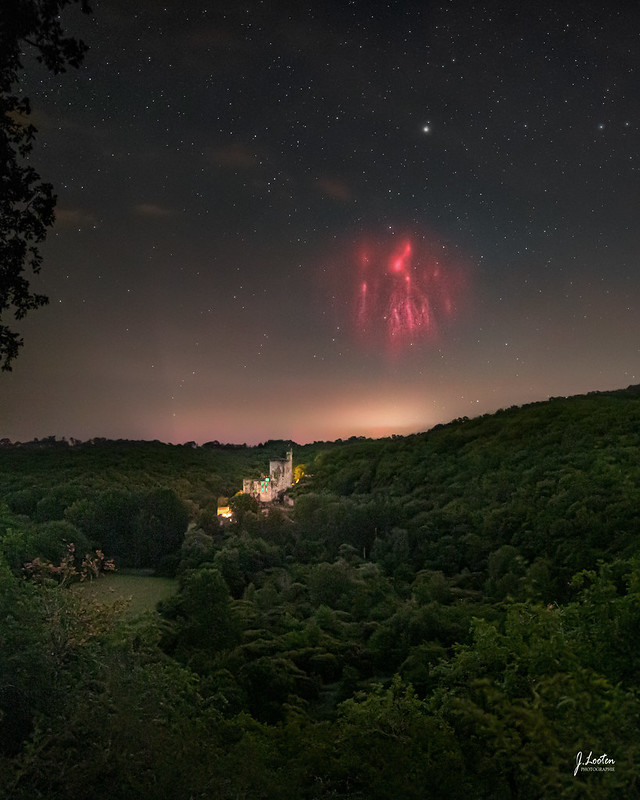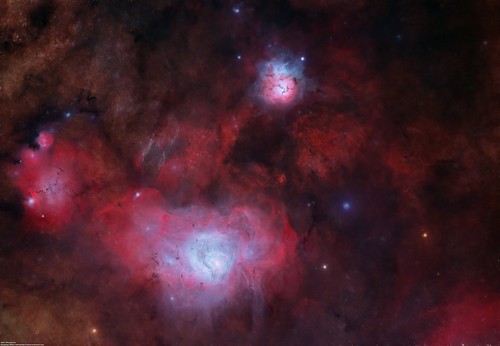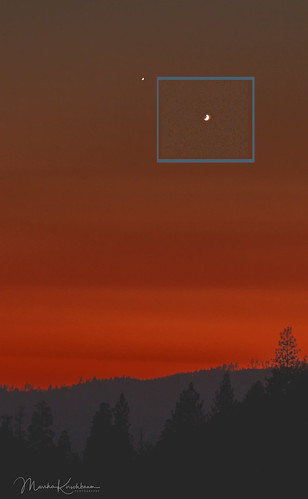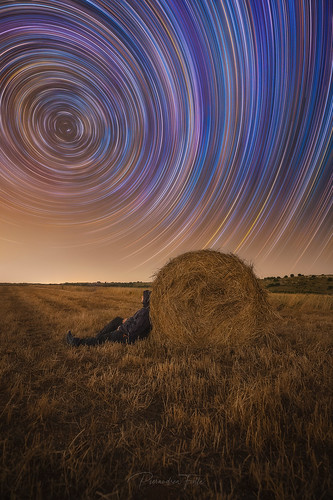Copyright: Julien Looten
Red Sprites (and Saturn) above Château de Commarque (Dordogne, France)

After spotting red sprites with the naked eye on a night out at Château de Losse (Dordogne), I went to Château de Commarque in the company of Maxime Villaeys to try and image them!
Red sprites are transient light phenomena that appear as reddish or pink flashes, with ethereal, elongated shapes. They generally appear above thunderclouds, at an altitude of between 50 and 90 kilometres, and are triggered by the intense electrical discharges that occur within thunderclouds (the latter being visible on the horizon in the form of whitish flashes).
That evening, these phenomena were particularly intense due to a large thunderstorm in the south of France, near Perpignan, around 250 km from the Dordogne. Several of them were captured on film that evening, here is the most intense.These phenomena are generally difficult to observe from the ground, as they occur well above storm clouds, and their duration is very short, often only a few milliseconds. They have mainly been documented by observations from aircraft, satellites and high-speed cameras.
This is the first time I've captured one on film, which is why the quality of the image needs to be greatly improved. As this is a very fast phenomenon, you need to use very short exposure times to capture them, as prolonged exposure will tend to erase them.
Note the presence of Saturn above the Sprites, which was very bright that evening.
Don't hesitate! Thanks in advance.
Exif : Canon 6d II - Sigma 28mm f1.4 - 3s - 8000 iso - on the night of 27 to 28/07/2023








